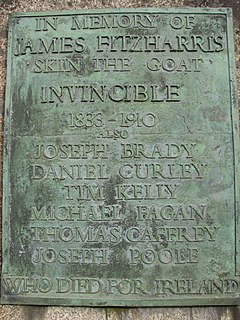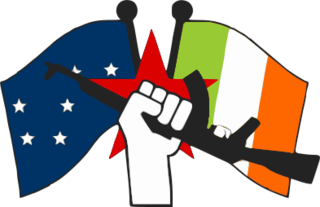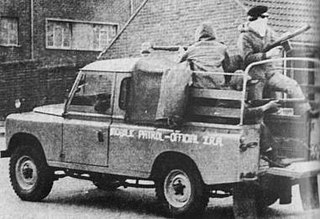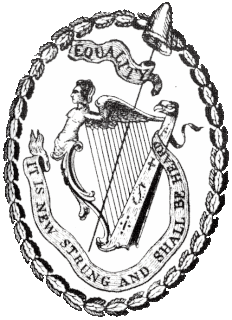 W
WThe Connolly Column is a phrase retroactively applied to a group of Irish republican socialist volunteers who fought for the Second Spanish Republic in the International Brigades during the Spanish Civil War. They were named after James Connolly, the executed leader of the Irish Citizen Army. They were a company-strength unit of the American Lincoln Battalion of the XV International Brigade, formed from Irishmen who were earlier part of the British Battalion of the same Brigade.
 W
WThe Continuity Irish Republican Army, usually known as the Continuity IRA, is an Irish republican paramilitary group that claims to be the armed forces of the Irish Republic that was proclaimed in 1916. It aims to bring about a united Ireland. It emerged from a split in the Provisional IRA in 1986 but did not become active until the Provisional IRA ceasefire of 1994. It is an illegal organisation in the Republic of Ireland and is designated a terrorist organisation in the United Kingdom, New Zealand and the United States. It has links with the political party Republican Sinn Féin (RSF).
 W
WCumann na mBan, abbreviated C na mB, is an Irish republican women's paramilitary organisation formed in Dublin on 2 April 1914, merging with and dissolving Inghinidhe na hÉireann, and in 1916, it became an auxiliary of the Irish Volunteers. Although it was otherwise an independent organisation, its executive was subordinate to that of the Volunteers.
 W
WThe Fenian Brotherhood was an Irish republican organisation founded in the United States in 1858 by John O'Mahony and Michael Doheny. It was a precursor to Clan na Gael, a sister organisation to the Irish Republican Brotherhood. Members were commonly known as "Fenians". O'Mahony, who was a Gaelic scholar, named his organisation after the Fianna, the legendary band of Irish warriors led by Fionn mac Cumhaill.
 W
WNa Fianna Éireann, known as the Fianna, is an Irish nationalist youth organisation founded by Bulmer Hobson and Constance Markievicz in 1909. Fianna members were involved in the setting up of the armed nationalist body the Irish Volunteers, and had their own circle of the Irish Republican Brotherhood (IRB). They took part in the 1914 Howth gun-running and in the 1916 Easter Rising. They were active in the War of Independence and took the anti-Treaty side in the Civil War.
 W
WThe "Irish Brigade" was an attempt by Sir Roger Casement to form an Irish nationalist military unit during World War I among Irishmen who had served in the British Army and had become prisoners of war (POWs) in Germany. Casement sought to send a well-equipped and well-organized Irish unit to Ireland, to fight against Britain, in the aim of achieving independence for Ireland. Such an action was to be concurrent with the ongoing war between Britain and Germany, thereby providing indirect aid to the German cause, without the ex-POWs fighting in the Imperial Germany Army itself.
 W
WThe Irish Citizen Army, or ICA, was a small paramilitary group of trained trade union volunteers from the Irish Transport and General Workers' Union (ITGWU) established in Dublin for the defence of workers' demonstrations from the Dublin Metropolitan Police. It was formed by James Larkin, James Connolly and Jack White on 23 November 1913. Other prominent members included Seán O'Casey, Constance Markievicz, Francis Sheehy-Skeffington, P. T. Daly and Kit Poole. In 1916, it took part in the Easter Rising, an armed insurrection aimed at ending British rule in Ireland. Despite the relatively small size of the army, it was more organised than the larger Irish Volunteers, with its members receiving superior training and being less affected by factional and ideological division. The ICA became involved in the War of Independence, taking responsibility for parts of Dublin and aiding the Irish Republican Army in various operations.
 W
WThe Irish National Invincibles, usually known as the Invincibles, were a splinter group of the Irish Republican Brotherhood. This group of assassins were active in Dublin between late 1881 and 1883, with an intent to kill the authorities in Dublin Castle.
 W
WThe Irish National Liberation Army is an Irish republican socialist paramilitary group formed on 10 December 1974, during "the Troubles". It seeks to remove Northern Ireland from the United Kingdom and create a socialist republic encompassing all of Ireland. It is the paramilitary wing of the Irish Republican Socialist Party (IRSP).
 W
WThe Irish People's Liberation Organisation was a small Irish republican paramilitary organisation which was formed in 1986 by disaffected and expelled members of the Irish National Liberation Army (INLA) whose factions coalesced in the aftermath of the supergrass trials. It developed a reputation for intra-republican and sectarian violence and criminality, before being forcibly disbanded by the Provisional Irish Republican Army (IRA) in 1992.
 W
WThe Irish Republican Army (IRA) was an Irish republican revolutionary paramilitary organisation. The ancestor of many groups also known as the Irish Republican Army, and distinguished from them as the Old IRA, it was descended from the Irish Volunteers, an organisation established on 25 November 1913 that staged the Easter Rising in April 1916. In 1919, the Irish Republic that had been proclaimed during the Easter Rising was formally established by an elected assembly, and the Irish Volunteers were recognised by Dáil Éireann as its legitimate army. Thereafter, the IRA waged a guerrilla campaign against the British occupation of Ireland in the 1919–1921 Irish War of Independence.
 W
WThe original Irish Republican Army (IRA) fought a guerrilla war against British rule in Ireland in the Irish War of Independence between 1919 and 1921. Following the signing of the Anglo-Irish Treaty on 6 December 1921, the IRA in the 26 counties that were to become the Irish Free State split between supporters and opponents of the Treaty. The anti-Treatyites, sometimes referred to by Free State forces as Irregulars, continued to use the name Irish Republican Army (IRA) or in Irish Óglaigh na hÉireann, as did the organisation in Northern Ireland which originally supported the pro-Treaty side. Óglaigh na hÉireann was also adopted as the name of the pro-Treaty National Army, and remains the official legal title of the Irish Defence Forces. This article deals with the anti-Treaty IRA that fought against the Irish Free State in the Irish Civil War, and with its successors up to 1969, when the IRA split again.
 W
WThe Irish Volunteers, sometimes called the Irish Volunteer Force or Irish Volunteer Army, was a military organisation established in 1913 by Irish nationalists. It was ostensibly formed in response to the formation of the Ulster Volunteers in 1912, and its declared primary aim was "to secure and maintain the rights and liberties common to the whole people of Ireland". The Volunteers included members of the Gaelic League, Ancient Order of Hibernians and Sinn Féin, and, secretly, the Irish Republican Brotherhood (IRB). Increasing rapidly to a strength of nearly 200,000 by mid-1914, it split in September of that year over John Redmond's commitment to the British War effort, with the smaller group retaining the name of "Irish Volunteers".
 W
WThe Official Irish Republican Army or Official IRA was an Irish republican paramilitary group whose goal was to remove Northern Ireland from the United Kingdom and create a "workers' republic" encompassing all of Ireland. It emerged in December 1969, shortly after the beginning of the Troubles, when the Irish Republican Army split into two factions. The other was the Provisional IRA. Each continued to call itself simply "the IRA" and rejected the other's legitimacy. Unlike the "Provisionals", the "Officials" did not think that Ireland could be unified until the Protestant majority of Northern Ireland and Catholic minority of Northern Ireland were at peace with each other. The Officials were Marxist-Leninists and worked to form a united front with other Irish communist groups, named the Irish National Liberation Front (NLF). The Officials were called the NLF by the Provisionals and were sometimes nicknamed the Red IRA by others.
 W
WThe Irish Republican Army, also known as the Provisional Irish Republican Army, was an Irish republican paramilitary organisation that sought to end British rule in Northern Ireland, facilitate Irish reunification and bring about an independent republic encompassing all of Ireland. It was the most active republican paramilitary group during the Troubles. It saw itself as the military force of an all-island Irish Republic, and as the sole legitimate successor to the original IRA from the Irish War of Independence. It is designated a terrorist organisation in the United Kingdom and an illegal organisation in the Republic of Ireland, both of whose authority it rejected.
 W
WThe Society of United Irishmen, also simply known as the United Irishmen, were a sworn society in the Kingdom of Ireland formed in the wake of the French Revolution to secure "an equal representation of all the people" in a "national government." Despairing of constitutional reform, in 1798 the Society instigated a republican insurrection in defiance of British Crown forces and of Irish sectarian division. Their suppression was a prelude to the abolition of the Protestant Ascendancy Parliament in Dublin and to Ireland's incorporation in a United Kingdom with Great Britain.